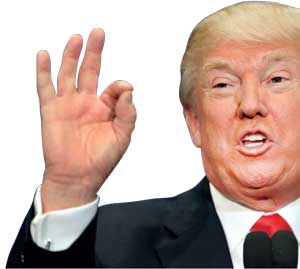27 Apr 2017 - {{hitsCtrl.values.hits}}
US President Trump’s ‘America First’ policy is not unique; protectionism has crept up since the 2008-09 global financial crisis as the G20 countries have stealthily ramped up measures against each other and governments have exhorted citizens to buy local products.
However, Trump’s stance signals a watershed for global trade. Before the US elections, the G20 countries were officially and firmly anti-protectionist. However, President Trump’s ‘America First’ policies led the G20 to drop its anti-protectionism commitment in its March communiqué. The other countries are likely to watch the US closely, ready to react, fuelling fears of an all-out global trade war.
Against this backdrop, Standard Chartered Global Research’s latest Special Report assesses the implications of this greater US protectionism for the rest of the world and the likelihood of another country becoming a global importer, a position the US has dominated.
A full-blown 1930s-style global trade war is unlikely, but more US protectionism is likely and would be a major threat to world trade given the US’ status as the world’s largest importer.
Markets are worried about this but Standard Chartered does not expect history to repeat itself, as the world economy is structured differently now. Financial and trade flows have closely integrated economies, making it harder to punish a partner without getting hurt in the process.
The extreme trade protectionism in the 1930s reflected a rigid system in which currencies were fixed and price-based adjustment mechanisms to address imbalances were absent. Floating exchange rates now provide a safety valve, lessening the need for dramatic steps to restore balance.
Also, multilateral organisations such as the World Trade Organisation (WTO) can help resolve disputes. The WTO covers c.98 percent of world trade and the WTO membership discourages tit-for-tat trade wars. Unilaterally leaving the WTO or ignoring its rules would be damaging.
Nevertheless, increased US protectionism remains a risk given the rhetoric from the Trump administration as a way to lower imports, increase domestic production and jobs and reduce income inequality. However, a country’s trade deficit is just a reflection of the country investing more than it saves. President Trump’s plans to boost fiscal spending are likely to lead to higher trade deficits as spending continues to outpace savings.
Previous episodes of protectionism have shown that the US has suffered as a result of its own policies: it has led to net job losses, saving jobs in the protected sector while losing jobs in other sectors; rather than reducing imports, it has replaced one supplier with another and it has worsened income inequality.
The impact of US protectionism on China, Mexico, Germany and Japan would differ sharply. For example, China accounts for nearly half of the US trade deficit, but as trade is of relatively low importance to its economy, the impact is comparable to that for Mexico (accounts for 10 percent of the US deficit).
The prevalence of global supply chains (GSCs) makes the focus on bilateral trade meaningless. Integration into GSCs also means that countries that supply intermediate products to these four countries (for further export) will likely be hit by US protectionism.
A piecemeal increase in trade protectionism is likely to result in losers and winners, opening the door for other countries to grab a greater share of trade. The four nations mentioned above are the main competitors for US trade, but they also compete with each other so measures against one would benefit the others.
Despite the rise of nationalist, anti-trade movements in Europe, most European governments remain committed to free trade. European countries, however, are not in a position to supplant the US as the main global importer. Asian economies, particularly China, are better suited to replace the US over the medium term. China has already begun to assume a greater role in global trade. While the US and Europe remain the largest consumers of Asian supply-chain products, China is slowly rising in importance as a final demand destination.
Thematic Research Head Madhur Jha commented, “If the US increasingly turns away from its role as global ‘importer-in-chief’, rising US protectionism could have implications for countries beyond those targeted, due to the prevalence of global supply chains. However, we think this will be insufficient for a global trade war but also that China is likely to play a bigger role as the final demand destination of the world over the longer term, building on its mega-trader status.”
Blurb
A full-blown 1930s-style global trade war is unlikely, but more US protectionism is likely and would be a major threat to world trade given the US’ status as the world’s largest importer
25 Nov 2024 41 minute ago
25 Nov 2024 1 hours ago
25 Nov 2024 1 hours ago
25 Nov 2024 2 hours ago
25 Nov 2024 3 hours ago